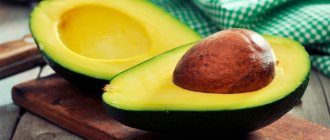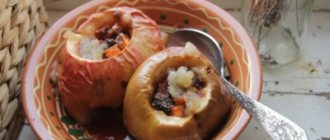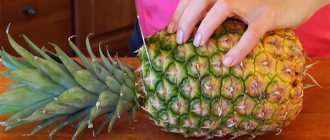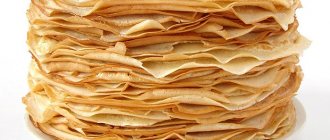During lactation, every young mother is responsible for planning her own diet. It consists of hypoallergenic, natural products, rich in nutrients, and quite high in calories. Green beans are acceptable foods when breastfeeding.
Let's consider in what quantity this product can be consumed, how to introduce it into the diet and the main contraindications.
In the nutrition of children: infants and not only
You can prepare delicious and healthy dishes for children from green beans.
Green beans can be added to vegetable puree to feed a baby after 5 months, when he masters vegetables. Fresh beans are boiled and pureed. Test portion (for allergies) – 1 teaspoon. If all is well, you can give it as part of a mixture with vegetables already familiar to the child or in their pure form, gradually increasing the amount to 60 g at a time. It is best to feed your baby beans at lunch. It is not advisable to combine it with meat dishes to avoid increased gas formation. It is good to add dill to dishes with green beans. You should give them to your child no more than 3 times a week. Older children can eat beans as they are prepared for adults.
Can a nursing mother have green beans?
When choosing vegetables for her diet, a nursing woman tries to select only the healthiest, something that will definitely not harm the baby.
Hearing the word “beans,” many mothers immediately associate it with heavy protein foods, which take a long time to digest and cause colic in babies.
But green beans are very healthy for breastfeeding and do not have the disadvantages that are characteristic of their “sister” from the legume family.
The benefits of green beans during breastfeeding
The beneficial properties of green (asparagus) beans are due to their excellent vitamin and mineral composition: vitamins E, B1, C, A, iron, magnesium, carotene, amino acids, carotene and much more.
If we compare this green vegetable and its “relative” from the legume family, it is much inferior in protein content, but in terms of the content of vitamins and nutrients it is much ahead of its rival.
In addition, although there are not so many proteins in the product, they are much easier to absorb by the body.
Vitamins will help support the immune system and help restore skin, nails and hair. Magnesium will ensure good functioning of the heart muscle, and iron will be an excellent assistant in the prevention of anemia. Proteins from green beans are perfectly absorbed, becoming building material for all organs and systems. A small amount of fat will not harm the figure and will not cause constipation in the baby.
Benefits of green beans:
- Contains healthy “slow” carbohydrates that provide energy and are not stored as extra pounds.
- It has low calorie content (about 30 Kcal per 100 g).
- A large amount of fiber promotes proper bowel function and rids the body of toxins.
- The vegetable is easily absorbed by the body of a nursing mother and does not cause allergies or discomfort in the baby.
- The affordable price allows families of any income level to buy this product.
- Finding fresh or frozen beans in the store is not difficult at any time of the year.
- It doesn’t take much time or special culinary skills to prepare dishes with the addition of this healthy vegetable.
- Beans have a pleasant, unobtrusive taste and go well with any food, which makes it a component of many dishes.
Although the risk of an allergy in a child is practically excluded, it is still worth monitoring him after the mother ate beans for the first time
Another advantage of green beans is that they do not accumulate toxins from the environment. Thanks to this property, the vegetable is useful not only for nursing mothers and pregnant women, but will also be an excellent complementary feeding option for babies in their first year of life.
How to introduce green beans into a nursing woman's diet
Introducing this green vegetable into the diet will not be difficult, since it is absolutely hypoallergenic and does not pose a threat to the baby. A nursing mother can safely eat this product from the first week of her baby’s life.
We advise you to read: Is it possible to have green onions while breastfeeding?
In the first months of breastfeeding, you need to strictly ensure that all food is heat-treated, including green beans. You don’t need to cook it for a long time, 6-8 minutes after boiling is enough.
Perhaps an individual reaction will be a change in stool or gas, then the portion should be reduced or the product removed from the diet for a while.
To enrich your mother’s body with essential vitamins and substances, you need to eat dishes with green beans at least 2 times a week.
How to properly cook green beans during breastfeeding
Proper preparation of foods during breastfeeding is very important. Green beans can be stewed, boiled, baked, eaten raw, added to salads and soups, used as a simple or as part of a complex side dish.
Advice: If mommy decides to try green beans raw, then this should be done no earlier than 4-5 months from the date of birth of the child.
Raw vegetables contain more fiber than cooked ones, so the risk of colic in babies is much higher.
Can a nursing mother have pickled green beans? No, in this form the product will not be beneficial for mother and baby. Despite the fact that the product is very tasty in this form, mommy should refrain from this delicacy due to the high content of vinegar, spices and salt in the composition. We must remember that any pickles and marinades during breastfeeding are prohibited throughout the entire period of breastfeeding.
When planning her diet, a nursing mother should never bypass green beans. This product is safe for a child, and it will allow a woman to diversify her menu with tasty and healthy dishes.
Beans during breastfeeding for mom
Green beans for breastfeeding are an irreplaceable and very healthy product that should be consumed regularly. The diverse vitamin and mineral composition and low calorie content of the plant will provide the woman’s body with all the necessary nutrients without fear of gaining extra pounds. At the same time, the child will receive vital microelements through mother’s milk, which will have a beneficial effect on his digestive system and full development.
Beneficial properties of bean product, composition
Due to the rich content of vitamins and minerals, eating beans by a nursing mother just a couple of times a week will replenish the body with missing elements, such as:
- vitamins A, E, group B, as well as ascorbic acid;
- iron, calcium, zinc, sulfur and other minerals;
- protein;
- amino acids.
Unlike regular beans, green pods are rich in fiber, which will contribute to excellent digestion for both mother and baby. When frozen, it does not lose its properties, so this product can be eaten at any time of the year, giving vital energy to both the nursing and growing body.
Can a nursing mother have green (asparagus) beans? This is a completely rhetorical question. Of course yes. Since the introduction of these green pods into the weekly diet will help to avoid vitamin deficiency and restore the functioning of the digestive system after pregnancy and childbirth.
Green beans for women's health
Green beans contain substances similar to the female sex hormone - phytoestrogens. By including delicious bean dishes in your menu, you can maintain normal hormone levels. For teenage girls and women during menopause, eating beans will help normalize and maintain hormonal levels. Women during menopause are recommended to eat green beans every other day for lunch or dinner in any form.
Green bean juice will be an excellent addition to the diet of a woman over 40 years old. In addition to increasing the level of female hormones, it will help improve the digestive system, provide necessary vitamins and help get rid of inflammatory processes. 100 ml of juice per day will be enough to heal the body. You can combine it with other vegetable juices, such as carrot juice.
Beans are useful for pregnant women:
- the high protein content allows you to partially replace meat with beans;
- fiber promotes timely and effective cleansing of the intestines;
- is the prevention of anemia;
- nicotinic acid in beans normalizes blood pressure, strengthens nerves, and normalizes metabolism;
- prevents pigmentation.
Green beans can be consumed during pregnancy
When eating beans during pregnancy, it is advisable to follow several rules:
- the beans must be well cooked to avoid indigestion;
- to avoid flatulence, beans should be soaked in cold water for several hours before cooking;
- Do not combine beans with meat products, but eat them as a separate dish.
Breastfeeding mothers are advised to include green beans in their diet. Its rich composition will benefit not only the mother herself, but also the baby. This type of legume will not cause excessive gas formation in the child, but, on the contrary, will normalize his stool.
To avoid anemia, support the kidneys and ease the digestion process, pregnant and lactating women are recommended to eat green beans 2-3 times a week as a separate meal throughout the entire period.
Harm
Despite many beneficial properties, beans should not be consumed in the following cases :
- if a woman’s body does not digest the polysaccharides contained in beans well, which can lead to increased gas formation and bloating;
- those suffering from nephritis or gout;
- women with gastritis, colitis, cholecystitis, pancreatitis;
- for gastric ulcers.
Beans are also dangerous for infants because they can lead to gas formation and colic in the tummy.
Green bean recipes
During lactation, not only the quality and beneficial characteristics of products are important, but also the method of preparing dishes. Since nursing mothers are strictly prohibited from consuming raw beans, experts recommend boiling the vegetable or steaming it. Fried beans should also not appear on a woman’s table, because such food is not suitable for the baby’s digestive system. Otherwise, you can prepare nutritious and healthy dishes from young bean pods that will add variety to the strict diet of a nursing woman.
What can you cook from bean pods?
Young beans in pods go well with meat and any vegetables. They are especially good in combination with cabbage. The following dishes can be prepared from beans:
- soups:
- salads;
- side dishes;
- puree;
- vegetable stew.
Homemade canned beans can be used as a filling for pies.
We offer recipes for the best green bean dishes that nursing mothers can include in their daily diet.
Light salad
The recipe for this delicious salad is very popular. Preparing the dish does not require much time, but it turns out to be an excellent and satisfying snack.
Product set:
- carrot – 1 pc.;
- beans in pods - 2 handfuls;
- apple cider vinegar – 2 tbsp;
- olive oil – 2 tbsp;
- parsley - a few sprigs;
- salt and ground pepper - on the tip of a knife.
How to cook:
- Rinse the vegetables well and boil.
- Cut the carrots into slices, and also divide the bean pods into several parts.
- Finely chop the greens.
- Mix all ingredients, add salt, pepper, vinegar and oil.
- Mix the salad well.
Then you can enjoy the taste of a nutritious dish.
Cream soup with beans
This everyday dish is perfect for a nursing woman's diet.
To prepare it you will need:
- green beans – 0.5 kg;
- vegetable or chicken broth – 500 ml;
- carrot – 1 pc.;
- potatoes - several tubers;
- salt, ground pepper - to taste;
- chopped greens - optional.
Cooking process:
- First add bean pods, diced carrots and potatoes into the prepared broth.
- Cook everything for 10 minutes.
- Then use a blender to turn the boiled vegetables into puree.
- Combine the two parts of the dish, add salt and pepper.
You can start tasting the aromatic first course with beans.
Video:
how to cook delicious green beans
Vegetable stew
And this amazing dish will appeal not only to the nursing woman, but also to the rest of the family. Considering the beneficial potential of vegetable stew with the participation of young beans, it can be included in your daily diet. To prepare the stew you will need the following food set:
- cauliflower – 1/2 head;
- tomatoes - 2 medium fruits;
- beets - 1 root vegetable;
- onion – 1 head;
- carrot – 1 pc.;
- green beans – 1/2 kg;
- eggplant – 1 pc.
When all the vegetables are prepared, you can begin the culinary process:
- First, cut the vegetables into any desired shape. Divide the cabbage into inflorescences.
- Place the vegetable mixture, except tomatoes and beans, in a suitable bowl greased with olive oil.
- Then place the prepared pan into the preheated oven.
- At a temperature of 130 degrees, cook the dish for about 20 minutes. The stew should not be brought to full readiness.
- After the specified time has passed, add bean pods and tomatoes to the vegetables.
- After this, transfer the half-cooked stew to another bowl and simmer over low heat until fully cooked.
Side dish recipe
In principle, this version of the dish is a little similar to the previous recipe, but the only difference is that in this case the green beans are prepared without adding other vegetables.
Sequence of culinary actions:
- For 1.5 liters of water, take 1/2 kg of young bean pods.
- Soak the beans in cold water for a couple of hours. If using a frozen product, no soaking is required.
- Then, in a separate bowl, bring the specified volume of water to a boil, add salt, beans and spices.
- Cook for 5-10 minutes until the beans are soft.
- Place the half-cooked beans again in a bowl of cold water for a minute.
- Drain the water.
This side dish goes well with fish and meat, but you can also eat it as an independent dish.
Beans during lactation: can a nursing woman eat them?
During the difficult period of breastfeeding for every woman, she should receive a varied and nutritious diet. A nursing woman's diet should include foods high in vitamins and nutrients, since it is from mother's milk that the baby receives all the microelements necessary for its normal development.
Often the list of vegetables that are allowed to be eaten during lactation does not include legumes. This is due to the fact that eating legumes can cause colic and bloating in a newborn.
But beans are a very nutritious product that has a beneficial effect on lactation, increasing the production of breast milk.
With the correct introduction of beans into the menu of a nursing woman, you can significantly diversify her diet and ensure that breast milk receives a sufficient amount of beneficial microelements and vitamins.
Effect on lactation
A competent approach to the consumption of beans by a woman with breastfeeding will ensure that the body is saturated with the nutrients necessary for her and her baby. The salts and beneficial microelements it contains have a beneficial effect on the condition of the entire body as a whole. Beans are the best analogue of meat that is of plant origin.
Eating beans helps strengthen the digestive system, reduce stomach acidity and prevent anemia.
One serving of a dish with beans contains an amount of iron equal to the daily requirement of the human body. This ensures the saturation of cells with oxygen and strengthens the immune system.
The high concentration of magnesium prevents cramps and strengthens muscle mass.
Beans also contain folic acid, which is very important for any woman, especially during breastfeeding. In addition, green beans in the diet of a nursing mother have a positive effect on lactation, promoting better production of breast milk.
Green beans
Green beans are an ideal product for a woman during lactation. Despite the fact that protein is present in smaller quantities than usual, folic acid, minerals and vitamins are contained in much higher concentrations.
Green beans prevent the occurrence of anemia, which often accompanies a woman during the postpartum period. In addition, these beans perfectly remove toxins from the body and prevent hormonal imbalance in women.
Green beans contain large amounts of fiber, so they are recommended to be consumed during breastfeeding. It helps to quickly saturate the body, but does not spoil the figure, since it is a low-calorie product.
Introduction of green beans into the diet
To minimize the risk of a negative reaction to green beans in a newborn, they should be administered taking into account certain rules.
Since the formation of the baby’s digestive system occurs by the 4th month of life, it is from this time that it is recommended to introduce new foods into the diet of a nursing mother.
First, you need to try green beans, and then you can experiment with other varieties.
Initially, the portion should not be more than 5 pods. If the baby’s reaction is normal, then gradually the portion can be increased.
If, after consuming a new product, a baby develops colic, bloating, and other negative consequences, then beans should be excluded from the nursing mother’s diet for 2–3 weeks. Only after this period has expired can you try to introduce beans into the menu again.
How to choose in the store?
When purchasing green beans, you need to pay attention to their appearance. It should have a uniform light green color and be elastic to the touch. Juice must be released from the cut.
Avoid wilted or damp pods as this indicates improper storage. And if storage conditions are violated, the beans quickly deteriorate, becoming covered with brown spots. At the same time, its beneficial properties are certainly lost.
Canned beans
Readers of Ogrudnichke.ru recommend: - Review of the most popular vitamin supplements for children from Garden of Life Read the article >>> - How can Earth Mama products help young parents care for their infants? Read the article - Dong Quai is an amazing plant that helps maintain youth in the female body Read more…
— Vitamin complexes, probiotics, omega-3 from Garden of Life, designed specifically for pregnant women Find out more >>>
Very often, when preparing bean dishes, fresh beans are replaced with canned ones, as this saves a lot of time. However, this is not the right decision in all cases.
Please note that canned beans have contraindications:
- its use should be avoided if there is a peptic ulcer, inflammation of the digestive system, gout, problems with the gallbladder and liver;
- Canned beans are included in baby food gradually so as not to unnecessarily overload the intestines.
Doctors do not recommend eating canned beans to women during breastfeeding. This is primarily due to the fact that the conditions in which beans were grown and preserved do not in all cases comply with existing standards. Therefore, the use of this product is associated with a certain risk to the health of the nursing mother and her baby.
A woman during lactation should introduce canned beans into her diet gradually, starting with small portions. Then you should observe the baby's reaction to the new food. If there is no negative reaction, then use of this product can be continued without fear.
Choosing the right canned beans
When choosing canned beans in a store, it is recommended to adhere to the following rules:
- It is better to choose beans in glass jars. Although their cost is higher, it is possible to appreciate their appearance;
- Pay attention to when the product was manufactured and its expiration date. Tomato paste in canned beans shortens the period before which they should be consumed;
- there should be no sediment at the bottom of the jar, as this indicates poor quality of the product;
- You should not buy canned beans in a metal container if its bottom or lid is swollen. This indicates that the contents of the jar are already spoiled;
- Once opened, canned beans can be stored in the refrigerator for no more than 3 days.
Cooking beans
Women during lactation are recommended to consume dishes with beans a couple of times a week. You can prepare first and second courses, and salads. Here are some simple recipes for dishes with beans that will be useful for nursing mothers and their babies.
Vegetable stew
To prepare vegetable stew for a nursing mother you will need:
- carrots – 1 pc.,
- beets – 1 pc.,
- cauliflower – ½ head,
- tomatoes – 2 or 3 pcs.,
- onions - 1 or 2 heads,
- green beans – 200 – 250 grams.
Vegetables need to be thoroughly washed and carrots and beets peeled. All ingredients, except tomatoes, need to be cut into cubes approximately 2 centimeters in size, mixed, placed on a baking sheet and added vegetable oil.
Place the baking sheet in the oven and bake at 130 – 135 C˚ for 20 – 25 minutes.
After this time, the almost finished mixture of vegetables should be transferred to a deep container, add fresh tomatoes cut into cubes and simmer over low heat until tender.
You can salt the finished dish to your taste and add a little chopped herbs. Spicy seasonings should not be used as they may affect the taste of breast milk.
Vegetable stew can be served both as an independent dish and as a side dish for meat.
Vegetables baked in a pot
To prepare this healthy and very tasty dish for women during breastfeeding, you can use any beans.
- If beans are used, they are soaked in cold water for several hours or overnight.
- The beans need to be cooked for one hour.
- The onion head is cut into large half rings and fried with the addition of vegetable or butter.
- Place boiled beans in a pot and a layer of fried onions on top. If you wish, you can supplement the dish with boiled lean meat or poultry.
- Cover the pots with a lid and place in an unheated oven. Next, the vegetables are baked for 35 minutes at a temperature of 150 – 165 C˚.
Bean soup - puree
For lunch, a nursing mother can prepare a very tasty bean soup - puree. To prepare it, it is better to use white beans so as not to cause discomfort in the baby.
- A glass of beans is poured with cold water and left overnight.
- To the pre-cooked broth (from meat or poultry) you need to add a couple of potatoes, one onion, beans and carrots. All this must be cooked until fully cooked.
- Then you should take out all the ingredients and grind them with a blender to a creamy consistency. The resulting mixture is added back to the broth and cooked for approximately another 15 minutes over low heat.
- You can sprinkle the soup with herbs and serve it with croutons.
Bottom line
Beans are an amazing and very healthy food that you don't need to avoid while breastfeeding. If consumed periodically, it will ensure that the body receives useful substances, strengthens the woman’s immune system weakened after childbirth, and improves the quality of breast milk.
Source: https://ogrudnichke.ru/grudnoe-vskarmlivanie/mozhno-li-struchkovuyu-i-konservirovannuyu-fasol.html
Canned beans during lactation
Nutritionists recommend that nursing women gradually introduce beans in small quantities into their diet when the baby is 5-6 months old, and his digestive tract gets a little stronger and adapts to the external environment.
At the beginning, it can be fresh green beans. But no one has canceled the seasons, and certain vegetables and fruits in their natural form are not present on the table all year round, so you can prepare many interesting tasty dishes from canned beans.
This product almost does not lose its usefulness during heat treatment, it is quickly and conveniently prepared, in contrast to cooking from fresh hard beans, which require preliminary soaking for many hours and long cooking.
How to choose canned beans wisely in the store
Among the 90 types of beans, red beans are the leader in terms of health benefits. The food industry preserves it in its natural form, in tomato juice, with the addition of other vegetables.
When choosing and making a purchase, you must pay due attention to the following factors:
- Prefer beans in glass jars; this makes it possible to make a visual assessment of the product, the integrity of the grains, and the quality of the filling.
- Carefully study the information on the label, date of manufacture, expiration date, reliable manufacturer, food additives and preservatives.
- After purchase, unopened, store in the refrigerator for no more than two days.
Contraindications for the use of beans by nursing mothers
There are contraindications for eating canned beans:
- Inflammation of the digestive system, gastritis, colitis, ulcers, pancreatitis.
- Problems with the gallbladder and liver, cholecystitis.
- Pain and discomfort from flatulence.
Proper preparation and consumption
There is one secret when cooking beans: adding other vegetables and seasonings, the presence of dill is especially effective; this significantly reduces gas formation and, therefore, avoids difficulty in digestion for the baby.
Should it be present in a child's diet?
This vegetable can and should also be present in the baby’s diet. There are no prohibitions on its use by an older child. In addition, green beans in pods are considered a hypoallergenic product, so they can be given even to children with atopic dermatitis. The main thing is to choose the freshest and juiciest beans possible and cook them correctly.
At what age should it be given to the baby?
If the child does not have any problems with the functioning of the stomach, then green beans can be introduced into his diet as early as 8 months of age. If the baby has constant intestinal disorders and severe colic, then you can give him the first try of this product at the age of 10 - 12 months.
Initial feeding
When initially introducing this product into a child’s diet, it can only be given in boiled or steamed form, making a monocomponent puree or adding a small amount to other vegetables (this will already be a multicomponent puree). Green beans can also be found in ready-made jarred purees.
In the future, as the child gets used to its taste, it is allowed to stew green beans with other vegetables or bake them together.
Reference! If you prefer to bake the product, it is better to use a special sleeve or foil. This way the vegetable will remain healthy and tasty, and it will not contain extra calories and fats.
Benefits for babies
The main benefits of green beans for children's bodies are:
- enriching the body with various vitamins and minerals;
- in active stimulation of intestinal function;
- in the rapid and complete digestibility of the product;
- high concentration of vegetable protein;
- in excellent prevention of anemia.
Regular consumption of this asparagus vegetable also helps strengthen the immune system.
How to properly introduce beans into your diet?
A nursing mother can gradually include this vegetable in the menu if, after eating it, she has not experienced allergic reactions or negative changes in the functioning of the digestive tract.
Main rules:
- the first dose should be about 5 pieces;
- green beans are better suited for the first tasting, and then you can try other varieties;
- to introduce new products, it is better to wait until the baby is 4-5 months old - at this age his digestive system is already formed;
- It is recommended to consume boiled beans in the morning, but not on an empty stomach;
- the mother should carefully monitor the baby’s stool and reaction;
- if there are no undesirable symptoms of bloating, you can increase the amount of boiled beans to 20 pieces per day;
- If your child has regular colic, it is better to avoid this product for a while.
Beans are an amazing and healthy plant that should not be neglected during lactation. Periodic consumption of this tasty product will enrich the body with valuable substances, improve the quality of milk and strengthen a woman’s weakened immune system.
Correct introduction of this vegetable into the diet will allow the nursing mother to feel freedom from restrictions and enjoy the best period in her life - natural breastfeeding!
Is it possible to eat pea soup during lactation?
Until now, the question of the beneficial properties of legumes in first courses remains controversial. Many experts recommend excluding the dish from the diet of nursing women, as it will only have a negative effect on the baby. At the same time, peas contain a large amount of vitamins, macro and microelements, as well as protein structures necessary for both mother and child. Therefore, deciding whether you can eat pea soup while breastfeeding should be done individually.
The main negative consequences of using the product:
- flatulence (legumes cause increased gas formation in the intestines);
- abdominal pain (bloating provokes intestinal colic);
- allergic reaction (due to a high content of foreign protein);
- heartburn (peas are too heavy a food for a child’s body to digest).
Not only the child, but also the woman herself is susceptible to these reactions. Therefore, if legume products are poorly tolerated, the dish should be excluded from the diet without regard to the baby’s safety. However, pea soup during breastfeeding can become a source of essential amino acids, powerful antioxidants that stop aging and important microelements, which are always in short supply in mothers during lactation.
Therefore, before refusing a dish, you need to check your baby’s reaction to it. However, the product is allowed only after the mother has introduced all the components included in the dish into her diet.
Immediately after birth and in the first three months of the postpartum period, eating legumes is prohibited. During this period, the baby’s gastrointestinal tract is not yet fully formed, so eating the dish will definitely have a bad effect on the baby’s condition. After reaching the permitted age, the mother first tries to eat boiled and steamed peas to check the child’s reaction to legumes. Only then can pea soup be introduced during breastfeeding.
When preparing a dish for the first time, you can add no more than 10 peas per two liters of liquid.
.
This will ensure that there are no negative reactions from the baby. The soup is first eaten in the first half of the day, immediately after breastfeeding. After this, carefully monitor the baby, noting rashes, bloating, colic and changes in stool. If there are problems, the product is excluded from the diet for several months, and then they try to introduce it again. For a nursing mother, pea soup is allowed in one small serving no more than 2 times a week. If the baby reacts ambiguously to the dish, then the frequency is reduced to once a week
.
Found a mistake? Select it and press Ctrl + Enter
It is no secret that a complete diet consists of first courses, which are necessary for the normal functioning of the digestive system.
After childbirth, such recipes are especially useful, because they help regulate bowel movements and even prevent constipation - but can a nursing mother have pea soup? Before trying the first dish with legumes, it is better to first read the recommendations of doctors so as not to harm your baby!
After the birth of a child, every mother is forced to listen to the advice of a pediatrician. Thus, the menu when breastfeeding a newborn is not very extensive - you have to refuse even seemingly harmless treats.
Pea soup itself does not pose any danger to the mother's body. Usually its recipe includes natural and healthy ingredients - meat and vegetables
But when it comes to the nutrition of a nursing woman, everything changes dramatically - here it is already important to think about the child’s body and his calm tummy
It turns out that most products after childbirth are prohibited not because they pose such a danger to the health of the baby
It’s just important to play it safe and not irritate the newborn’s sensitive ventricle so that he is not tormented by intestinal colic and gases
Pea soup is exactly the kind of dish that a nursing mother should not try in the first months after the baby is born. Peas are a product that is difficult to digest, and therefore, when it is digested, flatulence and abdominal pain can develop. Naturally, this is a potential risk for an infant. Because newborns can react acutely even to very safe products.
Recommendations from nutritionists
Using green bean pods, you can prepare a lot of healthy dishes for mother and child. But, wanting to add bright accents to her own menu, a nursing woman should remember a few useful tips:
- Bean soup can be included in the menu no more than twice a week.
- Bean dishes should not be eaten in the afternoon, as they take a long time to be processed.
- Red beans in pods, although they contain more iron, can trigger an allergic reaction.
- At first, it is better to cook the soup with plain water or vegetable broth.
- It is not advisable to combine beans and meat in one plate. It is better to consume these products separately.
- Frying vegetables to season the soup is unacceptable, since such an addition will cause upset bowel movements and colic in the child.
- Beans absorb water well, so for first courses you need to take 2 or 3 times more liquid per part of beans.
- Green beans should be boiled for no more than 5–10 minutes, and steamed for a quarter of an hour.
- It is necessary to soak bean pods if they are used fresh.
Compliance with the rules listed here will help the mother cope with culinary tasks every day, and the baby will grow healthy and strong.
Conclusion
Every mother not only gives her child life, she shapes his eating habits. Through mother's milk, a little person learns the harmony of tastes and aromas. Food is necessary for any person, because it contains everything without which life itself is impossible. Therefore, every loving mother should gradually open the doors to this world for her baby. Green beans are a unique product in its structure and composition. The ideally balanced composition of each grain will bring maximum benefit to the baby and help the mother overcome the difficulties of the breastfeeding period.
“Important: all information on the site is provided for informational purposes only. Before applying any recommendations, consult with a specialized specialist. Neither the editors nor the authors are responsible for any possible harm caused by the materials.”
What should you watch out for?
Like any other product, green beans, if used incorrectly, can cause harm not only to the mother, but also to the child. Therefore, you should familiarize yourself with the important points when introducing this product into your diet.
This type of legume contains phytic acid.
It is safe in small quantities, but if beans are often consumed in pods, it will not allow the body to absorb beneficial nutrients. A number of proteins of plant origin can cause digestive problems in mother and baby. Therefore, this product must be introduced into food with extreme caution, paying attention to the baby’s behavior some time after breastfeeding. In rare cases, the presence of green beans in a nursing mother's dishes can cause allergies in the baby. Fiber, contained in large quantities in the product, can provoke an exacerbation of diseases previously present in a woman’s intestines, for example, colitis. This information especially applies to mothers who have undergone a cesarean section.
Is it possible to use the product during breastfeeding?
It is this representative of the legume family that is an approved food product for a woman during the period while she is breastfeeding. However, this permission only applies to cases where:
- the product is subjected to proper heat treatment;
- when it is introduced into the diet in a timely manner and consumed in the correct dosage;
- when the woman and baby do not have food allergic reactions to this product.
Only if all these points are met, green beans can be included in the diet of a breastfeeding woman.
From what month is it advisable to include it in the diet?
The opinions of pediatricians and breastfeeding specialists regarding the timing of introducing this product into the diet are unanimous. All experts believe that a woman can consume green beans no earlier than 5 months after giving birth. It is by this age that the child’s gastrointestinal tract will already be partially strengthened and will be able to adequately respond to new nutrients that appear in mother’s milk.
5 months of age of a child is the minimum acceptable value at which the mother is allowed to eat green beans. And this is provided that the baby has no problems with the gastrointestinal tract. In all other cases, it is recommended to postpone the introduction of this product until the child reaches 8 months of age.
What's the best way to cook a vegetable?
During lactation, a woman’s diet should include dishes that have undergone gentle processing. Therefore, green beans can be consumed in the following forms:
- steamed;
- stewed alone or with other permitted vegetables;
- stewed in sour cream and cream;
- baked in the oven;
- boiled in water with spices.
Note! When choosing a specific cooking method, you should remember that, if possible, it is necessary to exclude fats and various spices with a strong taste and aroma from the diet as much as possible. Sometimes, it is they, and not the beans themselves, that can become the culprits of the body’s negative reaction to this product.
Positive properties for nursing mothers
Reasonable consumption of green beans brings invaluable benefits to the body of a nursing woman:
- Helps improve intestinal motility and get rid of constipation, which plagues most women after childbirth.
- Helps relieve anemia.
- Gives quick saturation, while rewarding the body with a minimum of calories.
- Helps improve well-being and boost immunity.
- Helps suppress depression and nervous psychosis.
But you can appreciate all these benefits for yourself only by consuming a high-quality product that has undergone proper processing.
How to eat beans during lactation
Very often, green pods on store shelves are found frozen. However, it is advisable for a nursing mother to consume a fresh product. Before production, it is necessary to thoroughly wash and sort the pods, removing areas with dark inclusions.
During lactation, until the baby is five months old, eating raw beans is not allowed. Such a product very often causes poisoning in infants, and the harsh plant fiber contained in green, unprocessed pods can lead to digestive upset due to the inability to digest and absorb the vegetable in the children's gastrointestinal tract.
During lactation, pediatricians recommend eating dishes based on green beans, prepared by boiling, baking in the oven, steaming, and stewing. Fried vegetables should be avoided during breastfeeding, since children's weakened digestive system is not able to digest and assimilate a heavy product. In addition, it is undesirable to digest this vegetable crop, since during prolonged heat treatment most of the valuable elements disappear.
You should not include pickled green beans on your menu. Due to the vinegar and spice content, this product can provoke allergic reactions in infants. The canned product contains only 70% of valuable elements and various additives that negatively affect the health of the baby.











